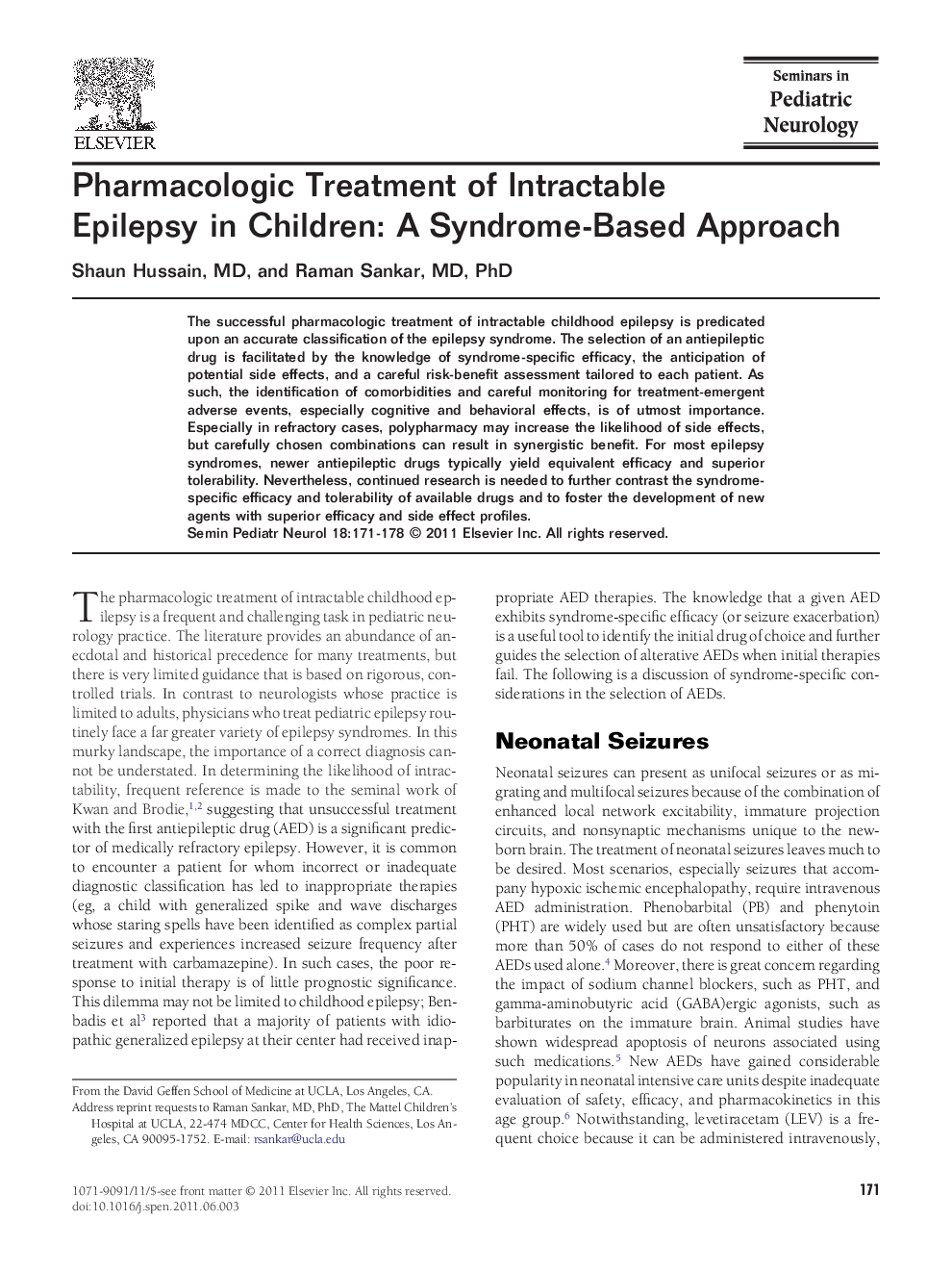| Article ID | Journal | Published Year | Pages | File Type |
|---|---|---|---|---|
| 3091078 | Seminars in Pediatric Neurology | 2011 | 8 Pages |
The successful pharmacologic treatment of intractable childhood epilepsy is predicated upon an accurate classification of the epilepsy syndrome. The selection of an antiepileptic drug is facilitated by the knowledge of syndrome-specific efficacy, the anticipation of potential side effects, and a careful risk-benefit assessment tailored to each patient. As such, the identification of comorbidities and careful monitoring for treatment-emergent adverse events, especially cognitive and behavioral effects, is of utmost importance. Especially in refractory cases, polypharmacy may increase the likelihood of side effects, but carefully chosen combinations can result in synergistic benefit. For most epilepsy syndromes, newer antiepileptic drugs typically yield equivalent efficacy and superior tolerability. Nevertheless, continued research is needed to further contrast the syndrome-specific efficacy and tolerability of available drugs and to foster the development of new agents with superior efficacy and side effect profiles.
